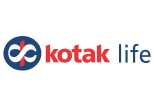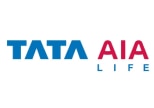Gaining A Better Knowledge Of The EPF And Its Significance
Table of Contents
Employees’ Provident Fund (EPF) is a retirement benefit scheme maintained by the Employees’ Provident Fund Organization (EPFO). The employee and the employer contribute to the EPF scheme on a monthly basis in equal proportions of 12% of the basic salary and dearness allowance. Out of the employer’s contribution, 8.33% is directed towards the Employee Pension Scheme.
Key Points about EPF Contribution
- 12% Employer’s contribution includes 3.67% EPF and 8.33% EPS
- 10% EPF share is valid for the organizations where there are 20 or less than 20 employees /organizations with losses incurred more than or equal to the net worth (at the end of financial year) /organizations declared sick by the Board for Industrial and Financial Reconstruction
- Total contribution made by the employer is distributed as 8.33% towards Employees’ Pension
- Scheme and 3.67% towards Employees’ Provident Fund.
- All contributions are updated in the EPF passbook
- The contribution made by the employee goes totally towards the provident fund of the employee.
- Apart from the above-made contributions, an additional 0.5% towards EDLI has to be paid by the employer.
- Certain administration costs towards EDLI and EPF standing at the rate of 1.1% and 0.01% respectively also have to be incurred by the employer. This means that the employer has to contribute a total of 13.61% of the salary towards this scheme.
EPF Eligibility Criteria
- Employees need to become active members of the scheme in order to avail of benefits under this scheme
- Employees of an organization are directly eligible for availing Provident Fund, insurance benefits as well as pension benefits since the day they join the organization
- Any organization employing a minimum of 20 workers is liable to give EPF benefits to the workers
- This scheme does not cater to the needs of people residing in Jammu and Kashmir
How can Employers Register for EPF?
Follow the process given below for EPF registration:
- Visit the Employees’ Provident Fund Organisation (EPFO) website
- Go to the section of ‘Establishment Registration’ that opens up a new page with ‘Instruction Manual’.
- It will explain the process of Employer Registration, followed by registration of DSC [Digital Signature Certificate] of the Employer which is a prerequisite for fresh application submission.
- Accept ‘I have read the instruction manual’ tickbox to proceed and fill in the details to register.
- An email e-link is sent which is to be activated and a mobile PIN is also sent. You need to upload certain documents to register.
- Those who are already registered can log in using their Universal Account Number (UAN).
- Get Free Credit Report with monthly updates
- Check Now
Benefits of EPF Scheme
EPF scheme is among one of the largest and biggest saving schemes available to Indian employees. The key benefits of the scheme are mentioned below:
- Long-Term Financial Security: Funds deposited in this account cannot be withdrawn easily and hence, helps in ensuring savings.
- Retirement Period: The accumulated fund under this scheme may be used at the time of retirement of the employee. This provides relief to the retired employee in the form of monetary security.
- Unseen circumstances: The accumulated fund can be used by the employee in case of any kind of emergency. The employee may choose to withdraw his/her fund prematurely. The scheme provides for such pre-term withdrawals in certain special cases.
- Unemployment/Income Loss: In case, where the employee loses his/her current job owing to any reason, then these funds may be used to meet expenses.
- Resignation/Quitting of Job: The employee post-resignation is free to withdraw his/her 75% of the EPF fund after one month of the date of having quit the job and remaining 25% after 2 months of unemployment.
- Death: In case of death of the employee, the collected amount along with the interest is given to the employee’s nominee thus helping the family tide through difficult times.
- Disability of the employee: If the employee is no longer in the position to work then he/she may use these funds to help him/her get over the difficult time.
- Lay-off: In cases of sudden layoffs or retrenchment from the job, this fund may be used by the employee until the time he/she gets another suitable job.
- Pension Scheme: The employer not only contributes towards the PF fund but also makes the necessary contributions towards the employee’s pension which can be later used by the employee post-retirement.
- Insurance Scheme: The act also provides for certain provisions whereby the employer is required to make certain contributions towards an employee’s life insurance where group insurance cover is not present. This scheme ensures that the employees are properly insured.
- Accessible All Over: With the help of the Universal Account Number (UAN), employees can easily get access to their PF account via the EPF member portal. They can transfer their accounts whenever they make a shift in their current jobs.
Conclusion
Contributions made to the EPF are tax exempt, however, the tax calculations are different. The employer’s contribution to the EPF account is not considered as part of your taxable income. So the employer’s contribution is tax-exempt at its source.
Also read- Tips To Evaluate Term Insurance Policies Online
What Is The Best Way To Compare Term Insurance Plans?
Disclaimer: This article is issued in the general public interest and meant for general information purposes only. Readers are advised not to rely on the contents of the article as conclusive in nature and should research further or consult an expert in this regard.









































